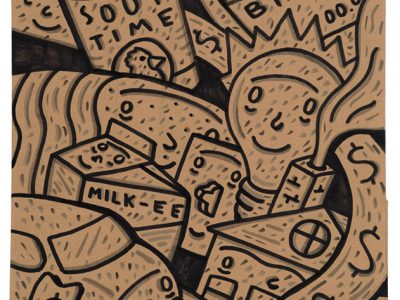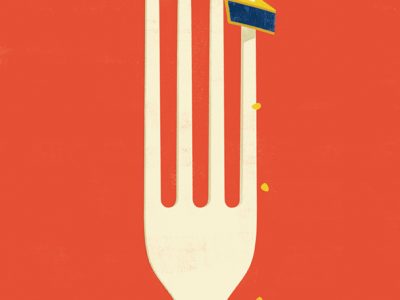For any government officials in Philadelphia or Harrisburg tempted to ask, “What have you done for me lately?” Penn has a ready answer: Plenty.
That’s the message of a recently released report on the University’s economic impact on the city and the Commonwealth of Pennsylvania. Prepared by University City-based EConsult Corporation using 2010 fiscal year data, the report tallied the University and Health System’s direct and indirect impact on the state economy at $14 billion annually, with $9.5 billion generated in the city of Philadelphia. That works out to $38 million and $26 million per day, respectively, and it’s also a 46.5 percent increase since Penn last issued a similar report in 2006, based on FY2005 data—this despite the intervening Great Recession.
“We try to do [studies like these] about every five years or so,” says Executive Vice President Craig Carnaroli W’85. “The methodology generally is to look at our expenditures both on the operating and capital side and to understand what that translates to based on the various multiplier effects in terms of jobs, economic activity, economic output, and so on.”
Among the elements that make up the total:
Job creation: With 31,000 workers, Penn is the largest private employer in the city and ranks second in the state. Overall, the report says, Penn’s economic activity generated 145,000 jobs in the state, and 57,200 in Philadelphia, by spurring employment for architects and construction workers, store clerks and hospitality workers, truckers, and other positions. In Philadelphia alone, those jobs were worth $4 billion in salaries and wages, and accounted for $172 million in local tax revenues, while the state reaped $6.1 billion in wages and $382 million in taxes.
Research: Penn’s research grants regularly total around $800 million annually, and hit $1 billion in 2010 thanks to additional funds provided through the federal stimulus bill, resulting in 15,500 jobs statewide, including 5,400 in Philadelphia.
Capital expenditures: Building and other capital projects produced $683 million in direct and indirect expenditures in Philadelphia and $1.1 billion statewide.
Purchases: Penn’s spending on its own operations was $5.2 billion, and generated another $7 billion indirectly for a total of $12.2 billion.
Purchases made by University employees and by students, their visitors, and visitors to Health System patients totaled $437 million overall.
Philanthropy: Some $92 million came to the University from alumni living outside the Philadelphia region, supporting scholarships, endowed professorships, building projects, and other efforts.
(Assessing the value of out-of-towners’ contributions and “what that fuels in terms of activity” is a somewhat new twist, Carnaroli says. “I wouldn’t want alumni to think that’s the only way they can help the University, but it enhances our ability to do things here in Philadelphia. We see the ripple effects of that.”)
Most people recognize that Penn is a big employer and attracts significant funding as a leading research center, but the University’s full impact on the economy is less well understood, Carnaroli says. “These reports are helpful in educating people on just how much tax revenue we do contribute to the city’s operating budget,” for example. And since Penn “can’t decide to pick up and relocate,” it is a stabilizing force in the city and region, he says.
Also helping to stabilize the economy was what Carnaroli calls Penn’s “prudent” response to the economic downturn, which included targeted savings, but no across-the-board cuts or wide-scale layoffs. A different approach could have “had a much bigger ripple effect,” he says. In fact, the report notes, Penn’s spending actually increased by almost 5 percent in 2010. “It gets back to the whole notion of interdependence between Penn and the city, Penn and the Commonwealth,” says Carnaroli. “When we are doing well, they can do well.”
Reinforcing that message can’t hurt, especially with longtime Penn-friendly leaders like Pennsylvania Governor Ed Rendell C’65 Hon’00 and Senator Arlen Specter C’51 out of office, and given the city and state’s own straitened circumstances. “We recognize the constraints [on state finances],” says Carnaroli, “but we hope the Commonwealth will be proud to associate with us—particularly given the impact our veterinary school has on the agriculture industry in Pennsylvania.”
Although times have been tough lately, the five-year period since 2005 also included a period of healthy growth “before we hit the wall in 2008,” Carnaroli notes, which helped produce that 46.5 percent increase in Penn’s impact by 2010. The next report, around 2015 or so, will likely show more modest growth. “That said, we’ve got a number of initiatives that we’re planning, and if some of them were to come to fruition in a real positive way, that could lead to more spectacular growth numbers.”
One promising but difficult-to-predict area is technology transfer—moving discoveries from the lab to the marketplace. According to the report, since 2006 Penn has ramped up staffing and resources by 30 percent at the Center for Technology Transfer, which has generated $46 million in licensing revenue during that period, generating 262 patents, 1,637 invention disclosures, 322 commercialization agreements, and 31 agreements with startup companies.
The process of recognizing and developing a technology’s commercial potential can take a decade or more, Carnaroli notes. “Penn has really built up its biomedical research prowess, and we’ve put the right team in place to be able to license the technology to various entities,” he says. “I think that’s an area where we might see some future growth—just because the pipeline looks promising and our approach to it has been enhanced over time.”
Penn mostly focuses on the social impact of its mission of educating future leaders and advancing knowledge, and that’s as it should be, Carnaroli says, but it’s also important for people to understand the University’s role as an economic engine for the city and region. “It’s nice to see that borne out in the report.” —J.P.




